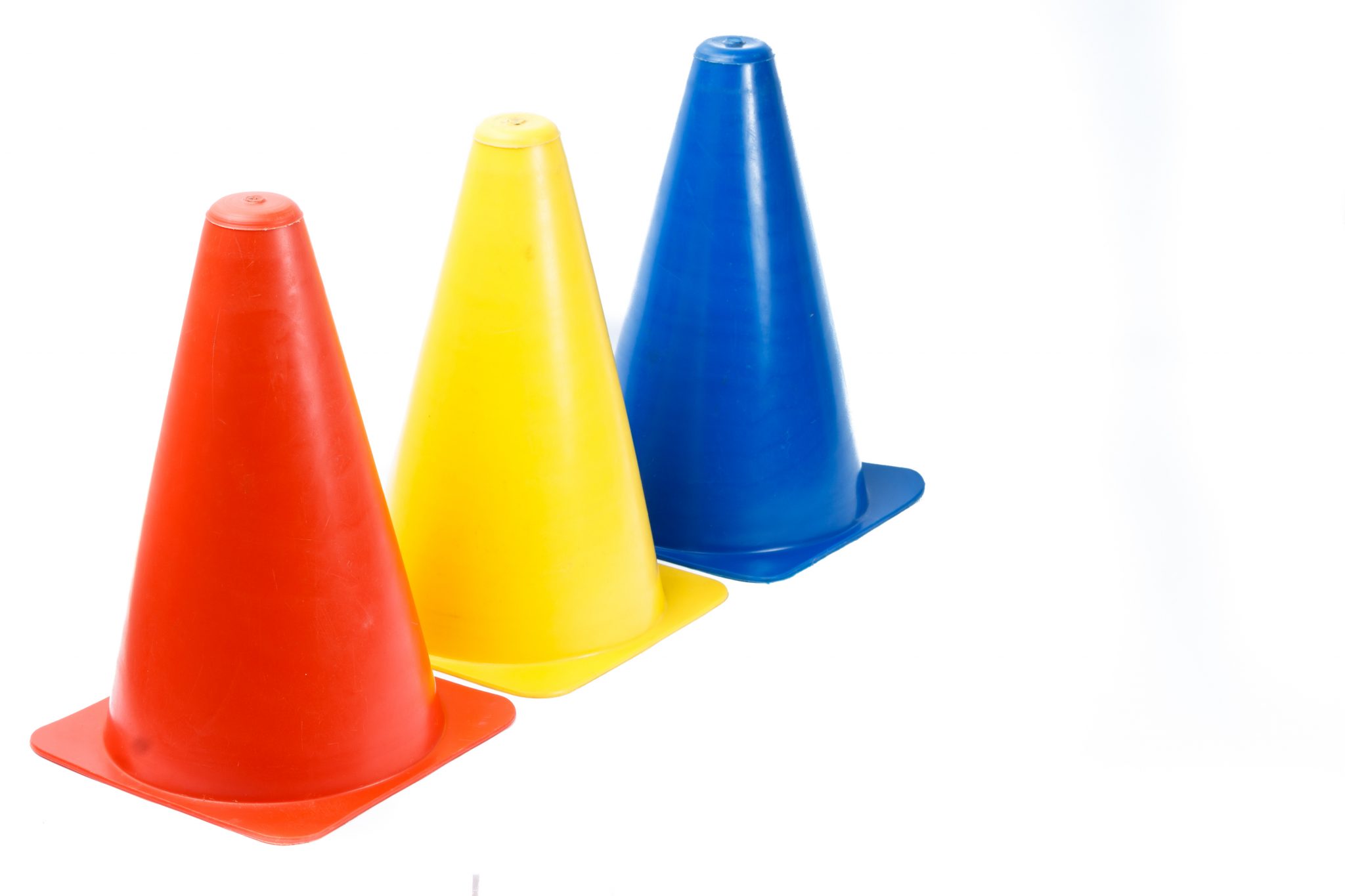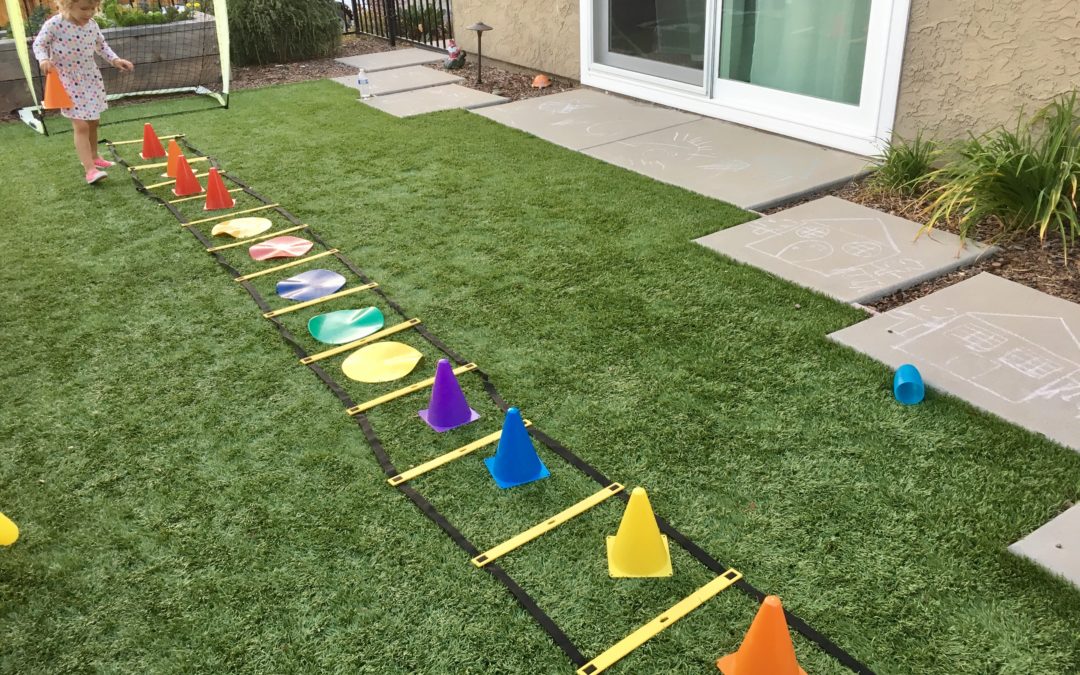“Toys” can take on many forms for a child.
From the well-marketed plastic renderings of the Disney character- of- the- day to empty cardboard boxes, a child’s imagination can turn inanimate objects into an inspiration to think, dream, and move.
As kids are less active at home than they have ever been, toys that inspire kids to move more can be a powerful tool in the fight against childhood obesity. Additionally, they can help kids develop the essential foundational skills of fitness and athleticism.
You may be thinking “Ok, what app do we need to download? Where do we find a “Lil Gym Rat” branded line of equipment? How much time will it take me to put this stuff together?”
The good news from my nearly 20 years of experience working with kids is that the fitness toys that continue to inspire kids to move don’t require technology, batteries, or even much guidance.
These are the fitness tools that kids will come early and stay late after a fitness session to play with. These are the items that continue to inspire my 3-year-old daughter and her playmates to create endless imaginative and active challenges in our own back yard.
To inspire your youngsters to be active at home, put together a box of the following items:
Multi-colored Cones

Cones are a fitness tool so simple that we often overlook how engaging they can be to a child.
The shape, color (especially with multiple colors), and even smooth texture inspire kids to stack, throw, kick, and use them for barriers to jump over and run around.
All of these activities provide important physical challenges that aid in developing lifelong fitness skills.
As parents, we can quickly configure cones into obstacle courses, race-tracks, or other formations that introduce kids to varying levels of physical challenge. Drawing letters and numbers on cones provides even more opportunities for fun activities.
Agility Ladder
We usually associate an agility ladder with training high level athletes. To a child, however, the novelty of a the spatial and rhythmic challenge of this tool can be an inspiration for hours of entertainment.
A quick demo is usually all kids need to get their creative and physically active juices flowing. After accidentally leaving an agility ladder in my own back yard after a video shoot, my 3- year- old daughter spent an hour climbing, crawling, hopping, and running through the rungs. It’s now her #1 outdoor toy request.
Multi-colored Bean Bags
Kids like to throw stuff. While this is a very important gross motor skill to practice at a young age, it can be a detrimental to property, valuables, and well, other people.
Bean bags provide a safe opportunity for kids to learn to throw and catch. They’re soft, so the risk of damage to property and people is very low. They don’t roll away, so they’re more difficult to lose.
A quick demo of different challenges for throwing accuracy or distance (throw to a latter rung or at a cone) can inspire all kinds of fun and safe independent activities.
Drawing numbers, letters, or other characters on bean bags can introduce kids to the visual focus on a moving object required for improving hand/eye coordination.
Multi-colored Dots or Rings
Often called “Agility dots/rings” these fitness tools provide children all kinds of fun movement accuracy challenges. Unlike cones, kids can stand on or in dots or cones.
With a quick demo, kids learn to set up different movement path challenges as they hop, skip, or jump from one dot or ring to another. The ground can become “hot lava” or a shark-infested ocean a child must move from one cone/dot to another without touching.
These also provide targets for throwing accuracy using the bean bags.
Balance, spatial awareness, and proprioceptive control are just a few of the many essential physical skills kids can develop playing with agility rings and dots.
The BOSU Sport Kids
Full disclosure, I’ve worked with this company to create a video series featuring this fitness tool for kids. Why? Because it’s by far the most appealing piece of equipment in my arsenal for kids.
The “sport” version of the BOSU ball (imagine an exercise ball cut in half) is a shrunken version designed for kids. It comes in all kinds of bright colors.
I brought one of these home and it quickly turned into my then 2-year-old daughter’s favorite toy, with absolutely no guidance from me! Prior to getting my own, for 10 years I had witnessed kids coming in to the gym and immediately gravitating to BOSU balls.
The soft top acts like a trampoline for kids and they love to bounce. Their proprioceptive and vestibular systems are challenged as they try to balance on the domed top as well.
While the BOSU Sport Kids is significantly more expensive than the other items on this list, it’s the one kids will enjoy the most with little to no guidance.
All of these fitness “toys” are inexpensive and can be easily acquired online through sites like Amazon.com. and Performbetter.com. The ages best suited for these are about 3-8 years old, but older as well as younger kids enjoy them as well.
They can be used individually, or in conjunction with one another. While kids will automatically gravitate to these tools, a small amount of guidance gives them a framework from which they can create endless activities.
While there are other great fitness tools that double as fun and active toys for kids, start by building an activity arsenal at home with the five items listed above. Store them in a bin or large bag and bring them out when kids are looking for something to do.
You’ll be amazed not only at how much kids enjoy being active with these simple pieces of equipment, but unlike the Disney character flavor-of-the-day, they continue to play with them as they grow.
Have fun inspiring kids to get off the couch and move!
Craig Valency, MA, CSCS, president and co-founder of SPIDERfit, has been a personal trainer for the last 11 years. He is currently working at Fitness Quest 10 in San Diego, an elite personal training and athletic conditioning facility. He specializes in youth strength and conditioning programs that promote physical literacy, injury prevention and optimal performance. Along with training youths from 6 to 18 years of age for general fitness, Craig has also worked with some of the top junior tennis players in the world. He has been a physical education consultant for the Stevens Point school district in Wisconsin for the last 3 years, helping revamp the district wide programming for the K-12 PE curriculum. Craig earned his bachelor degree from UCLA, and Masters Degree in Kinesiology from San Diego State University.





Hi Bret, I would love love love to share this. All my mom’s students need some late summer help for kiddos at home. 🙂
Tricia, please share! And let me know if there is anything else I can share with you that helps. Thanks! Sorry we didn’t connect at World! It was a pretty intense year. I’m sure I’ll see you soon!